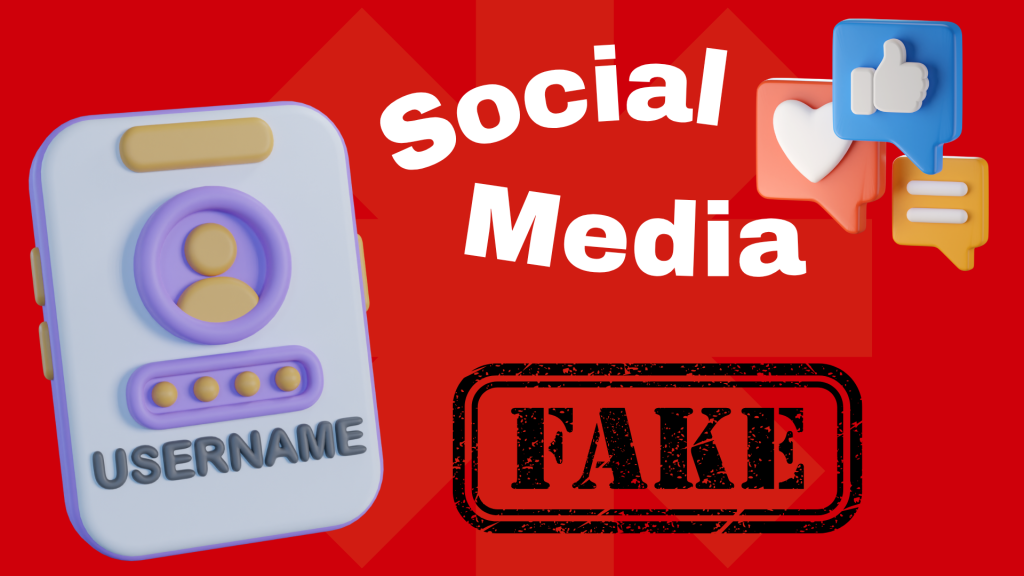
Fake usernames are a pervasive threat in our increasingly digital world, especially across social media platforms. Scammers, spammers, and malicious actors frequently employ deceptive usernames to appear legitimate, gain trust, and ultimately trick unsuspecting individuals. Learning to identify these fake usernames is a crucial skill for anyone navigating the online landscape. This article will equip you with the knowledge to spot common patterns in fake usernames, helping you protect yourself from potential online fraud and maintain a safer digital presence. Understanding the subtle red flags in these seemingly innocuous usernames can make all the difference in safeguarding your personal information and financial security.
Contents
The Anatomy of a Suspicious Username
While there’s no single definitive characteristic of a fake username, patterns emerge when analyzing accounts used for fraudulent activities. These patterns are often designed to either mimic legitimate accounts or to appear generic and unassuming.
Red Flags in Username Construction
Scammers often rely on certain linguistic and structural cues to create fake usernames that slip past initial scrutiny.
- Jumbled Letters and Numbers: A common tactic for bots and automated accounts is to generate usernames that are a random string of letters and numbers (e.g., “User12345xyz,” “xY_7B9kLp”). These lack any personal touch and are highly indicative of a non-human origin. They’re easy to generate in bulk, making them ideal for large-scale scam operations.
- Excessive Underscores or Dots: While some legitimate users might use underscores or dots for separation, an overabundance (e.g., “John_Doe_Official__,” “Mary.Smith.Pro.”) can be a sign of a fake username. Scammers use these to create variations of popular names, hoping you won’t notice the subtle difference.
- Slight Misspellings of Known Names: This is a classic impersonation tactic. A scammer might use “Amaz0nSupport” instead of “AmazonSupport” or “Netflix_Help” instead of “Netflix_Help” by substituting letters with similar-looking numbers or adding extra characters. Always double-check names of official entities or people you know.
- Generic Names with Appended Numbers: Usernames like “SarahJohnson789” or “David_Clark_22” can be suspicious, especially if the account is new and claims to represent a public figure or business. While some real people might have such usernames, their prevalence among fake usernames makes them a red flag.
- Keyword Stuffing: Usernames crammed with keywords related to common scams (e.g., “CryptoGuruX,” “GiveawayWinnerFast,” “InvestmentProfitsNow”) are designed to attract specific victims. They often sound too good to be true and directly promote scammy propositions.
- Too Many Punctuation Marks: Beyond underscores, an excessive use of hyphens, periods, or other symbols can signal a manufactured username, intended to bypass basic filters or create unique variations.
Impersonation and Urgency in Usernames
Scammers often leverage trust by trying to impersonate official entities or individuals.
- “Official” or “Support” in Non-Official Contexts: A username like “Facebook.Support.Team” reaching out to you via direct message, when it’s not a verified account, is almost certainly a fake username. Legitimate support channels rarely initiate contact this way and will have official verification.
- Brand Names with Minor Variations: Be wary of usernames that look almost identical to a well-known brand but have a slight alteration (e.g., “NikeStore_Official” vs. “NikeStore_Official_”). These fake usernames are designed to trick you into believing they are the real deal.
- Urgent or Demanding Language: Usernames that imply immediate action or offer unrealistic promises (“WinCashNow,” “ClaimYourPrize”) are almost always associated with scams. They aim to create a sense of urgency to bypass your critical thinking.

Beyond the Username: Holistic Assessment
While the username is a critical first indicator, it’s part of a larger picture. To truly identify fake usernames, consider them in conjunction with other profile elements.
Profile Picture and Bio
- No Profile Picture or Generic Images: Many fake usernames will have no profile picture, a default avatar, or a stock photo that can be found with a reverse image search. Genuine accounts almost always have a personalized photo.
- Inconsistent or Sparse Bio: A fake username often comes with an incomplete, generic, or suspicious bio. Look for bios that are too vague, filled with irrelevant emojis, or directly link to dubious websites.
Activity Patterns
- New Account Creation Date: Many fake usernames belong to recently created accounts. While everyone starts somewhere, a new account combined with other red flags is highly suspicious.
- Low Follower/Following Ratio (or Extremely Skewed): A fake username often has very few followers but follows thousands of accounts, or vice-versa, indicating bot activity or an attempt to quickly gain legitimacy.
- Generic or Repetitive Posts: If the account associated with the suspicious username only posts generic content, spam, or links to external sites, it’s a strong indicator of a fake username.
- Lack of Genuine Interaction: Fake usernames rarely engage in meaningful conversations. Their comments might be generic, out of context, or simply promotional.
The Role of an Uncommon Names List
While a username like “JohnSmith123” might be generic, uncommon names list can sometimes be leveraged by scammers to appear more unique or less suspicious. They might use a name that sounds vaguely legitimate but is difficult to verify, making it harder for you to find an “official” version to compare it against. However, if such an uncommon name is combined with the structural red flags mentioned above (jumbled characters, excessive underscores), it should still raise suspicion. Scammers often use a combination of tactics.
Protecting Yourself: Your Digital Shield

Recognizing fake usernames is your first line of defense.
- Verify Identity: If an account with a suspicious username contacts you, especially if it claims to be a friend or an official entity, try to verify their identity through an alternative, known channel (e.g., call your friend, visit the official website).
- Look for Verification Badges: Most legitimate public figures and brands have verified badges (blue checkmarks) on social media. If a username claims to be official but lacks this, it’s likely a fake username.
- Do Not Click Suspicious Links: Many fake usernames are used to spread phishing links. Never click on links from accounts you don’t trust.
- Report and Block: If you encounter a fake username, report it to the social media platform and then block the account. This helps protect others and prevents further contact.
- Trust Your Instincts: If a username or an account feels “off,” it probably is. Your intuition can be a powerful tool in spotting deception.
By becoming adept at identifying fake usernames, you empower yourself to navigate social media safely and confidently, protecting yourself and your loved ones from the ever-present threat of online fraud. Stay vigilant, stay informed, and think before you connect.
